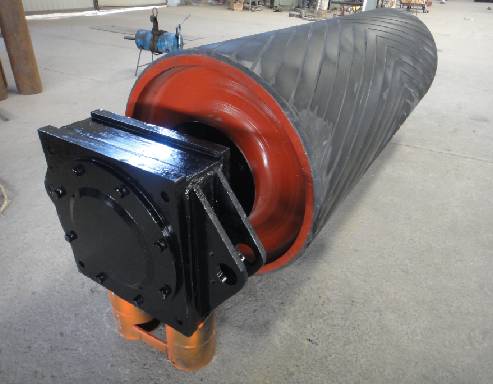 Afrikaans
Afrikaans  Albanian
Albanian  Amharic
Amharic  Arabic
Arabic  Armenian
Armenian  Azerbaijani
Azerbaijani  Basque
Basque  Belarusian
Belarusian  Bengali
Bengali  Bosnian
Bosnian  Bulgarian
Bulgarian  Catalan
Catalan  Cebuano
Cebuano  Corsican
Corsican  Croatian
Croatian  Czech
Czech  Danish
Danish  Dutch
Dutch  English
English  Esperanto
Esperanto  Estonian
Estonian  Finnish
Finnish  French
French  Frisian
Frisian  Galician
Galician  Georgian
Georgian  German
German  Greek
Greek  Gujarati
Gujarati  Haitian Creole
Haitian Creole  hausa
hausa  hawaiian
hawaiian  Hebrew
Hebrew  Hindi
Hindi  Miao
Miao  Hungarian
Hungarian  Icelandic
Icelandic  igbo
igbo  Indonesian
Indonesian  irish
irish  Italian
Italian  Japanese
Japanese  Javanese
Javanese  Kannada
Kannada  kazakh
kazakh  Khmer
Khmer  Rwandese
Rwandese  Korean
Korean  Kurdish
Kurdish  Kyrgyz
Kyrgyz  Lao
Lao  Latin
Latin  Latvian
Latvian  Lithuanian
Lithuanian  Luxembourgish
Luxembourgish  Macedonian
Macedonian  Malgashi
Malgashi  Malay
Malay  Malayalam
Malayalam  Maltese
Maltese  Maori
Maori  Marathi
Marathi  Mongolian
Mongolian  Myanmar
Myanmar  Nepali
Nepali  Norwegian
Norwegian  Norwegian
Norwegian  Occitan
Occitan  Pashto
Pashto  Persian
Persian  Polish
Polish  Portuguese
Portuguese  Punjabi
Punjabi  Romanian
Romanian  Russian
Russian  Samoan
Samoan  Scottish Gaelic
Scottish Gaelic  Serbian
Serbian  Sesotho
Sesotho  Shona
Shona  Sindhi
Sindhi  Sinhala
Sinhala  Slovak
Slovak  Slovenian
Slovenian  Somali
Somali  Spanish
Spanish  Sundanese
Sundanese  Swahili
Swahili  Swedish
Swedish  Tagalog
Tagalog  Tajik
Tajik  Tamil
Tamil  Tatar
Tatar  Telugu
Telugu  Thai
Thai  Turkish
Turkish  Turkmen
Turkmen  Ukrainian
Ukrainian  Urdu
Urdu  Uighur
Uighur  Uzbek
Uzbek  Vietnamese
Vietnamese  Welsh
Welsh  Bantu
Bantu  Yiddish
Yiddish  Yoruba
Yoruba  Zulu
Zulu bend pulley and snub pulley
Bend Pulleys and Snub Pulleys An Overview
Pulleys are essential components in various mechanical systems, widely used in industries ranging from mining to manufacturing. Two specific types of pulleys that play crucial roles in the operation of conveyor systems and other similar machinery are bend pulleys and snub pulleys. Understanding their functions and applications can enhance the efficiency of these systems.
Bend Pulleys
Bend pulleys, as their name implies, are designed to change the direction of a belt or rope in a mechanical system. They are usually situated at acute angles, allowing the belt to navigate around corners or bends while maintaining the tension required for the system to operate effectively. These pulleys offer several advantages, including the reduction of wear and tear on the belt, which can lead to decreased maintenance costs and increased system longevity.
In many cases, bend pulleys are critical for keeping tension on the drive belt, particularly in applications with long spans where sagging might occur. This helps in minimizing belt misalignment and slippage, which can adversely affect the efficiency of the system. Typically made of durable materials such as steel or plastic, bend pulleys are available in various sizes and configurations to suit specific operational needs.
bend pulley and snub pulley

Snub Pulleys
Snub pulleys, on the other hand, are used to increase the contact surface area between the drive belt and the drive pulley. By doing so, they help enhance the grip between the two, which can prevent slippage and ensure that efficient power transfer occurs. Snub pulleys are usually positioned in close proximity to the drive pulley, strategically modifying the angle of the belt to provide additional tension.
In addition to enhancing grip, snub pulleys are instrumental in improving the overall performance of the mechanical system. They contribute to the regulation of belt tension, which is critical for smooth operation. Properly functioning snub pulleys can lead to greater energy efficiency, reduced operational costs, and longer life spans for the conveyor belts.
Conclusion
In summary, bend pulleys and snub pulleys serve distinct yet complementary roles in mechanical systems. Bend pulleys facilitate directional changes in belts, improving wear resistance and tension maintenance. Conversely, snub pulleys enhance the contact and grip between a drive belt and its pulley, preventing slippage and ensuring efficient power transfer. Understanding these components can lead to better design and maintenance practices in various industrial applications, ultimately contributing to increased productivity and efficiency. As technology continues to evolve, the optimization of these essential components will remain a focal point in engineering and design processes.
-
Revolutionizing Conveyor Reliability with Advanced Rubber Lagging PulleysNewsJul.22,2025
-
Powering Precision and Durability with Expert Manufacturers of Conveyor ComponentsNewsJul.22,2025
-
Optimizing Conveyor Systems with Advanced Conveyor AccessoriesNewsJul.22,2025
-
Maximize Conveyor Efficiency with Quality Conveyor Idler PulleysNewsJul.22,2025
-
Future-Proof Your Conveyor System with High-Performance Polyurethane RollerNewsJul.22,2025
-
Driving Efficiency Forward with Quality Idlers and RollersNewsJul.22,2025





























